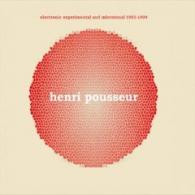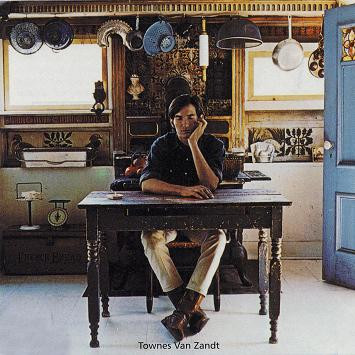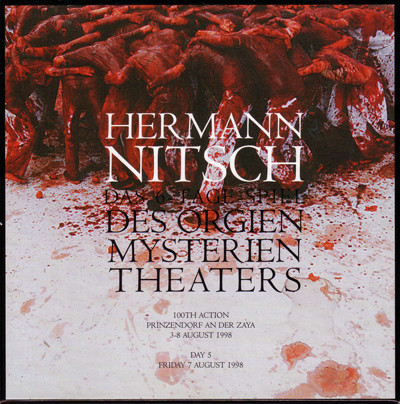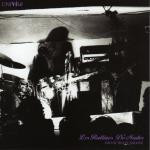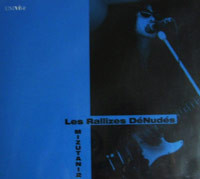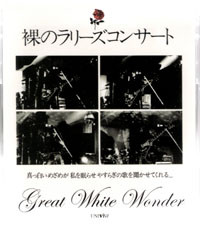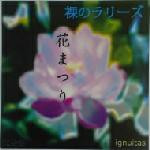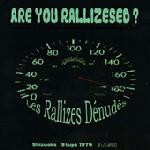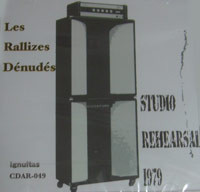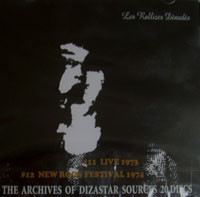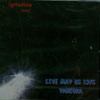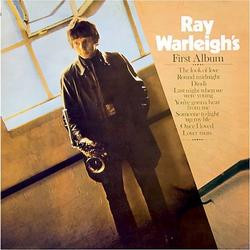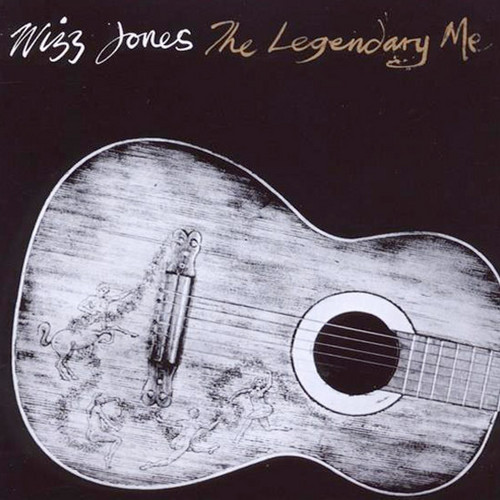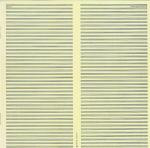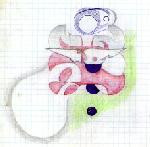Reissues
electronic experimental and microtonal 1953-1999
This is the 5th part of the complete experimental and electronic music by the composer - after Liège à Paris (1977), Eight parabolic studies (1972), Four parabolic mixes (1972-2001, Mixed music (1966-70) and before Narrative voices and electronic (1960-1982), Paraboles-Mix avec Leçons d'Enfer (1972-1999) and Experimental Electronic and Noise (1954-61). Here, 5 rare pieces that come from 5 decades and performed by Rohan de Saram (Quatuor Arditti), Evert van Tright (who played mainly Stockhausen),…
s/t
The classic 1969 recording, originally released on the Poppy label, was Texas country blues & folk singer Townes Van Zandt's third full-length release...influenced by Hank Williams, Bob Dylan and Lightnin' Hopkins, Van Zandt's unique style -- at times brooding and introspective, at times relentlessly forceful and dynamic -- spoke to the dark corners of the human soul, and has been claimed as an influence by everyone from Sonic Youth to Willie Nelson...
Delta Momma Blues
One of four new CD reissues of the early albums of renowned songwriter Townes Van Zandt. Recorded between 1969 and 1978, these albums are the heart of any serious consideration of Van Zandt's brilliant career. Features some of the most iconic cover art in album history, each designed by Milton Glaser.
Das 6-Tage-Spiel Des Orgien Mysterien Theaters: 5-Tag
long deleted, last copy of this outstanding box: Hermann Nitsch is perhaps the best known of the notorious Vienna Actionists. His carefully choreographed performance art frequently involves cacophonous noise, buckets of blood and animal dismemberment, turning gory excess into ritualistic spectacle. Nitsch's undoubted Gesamtkunstwerk is his Des Orgien Mysterien Theaters, a six-day 'play' that was first performed in its entirety in 1998 at the artist's Prinzendorf Castle, in his native Austria.The…
End Of Heavy Groove
An awesome double CDS Part 1_ Unknown Live1976, Part2_1976 Summer, 30, July. UNIVIVE is a new, Mitzutani approved, Rallizes-only label. ACTUAL CDs - not CDrs.
Mizutani 2
Expanded edition of one of the few official albums released by Rallizes during their existence. The original was made up of select 1973-75 material, but this includes all of the material from the original session tapes, plus a Dec 13, 1980 soundboard recording, and on the 3rd disc, some demos from 1976. Actual CDs (NOT CDRs). 1 copy available
Cable Hogue Soundtrack
limited to 250 copies, compiled by Mizutani in the early 90s (tracks seem to span quite a few years) as a soundtrack to Ethan Mousikes Rallizes film. Players include Mizutani Takashi, Nakamura Takeshi, Nagata Mikio, Shoda Shunichiro, Hiroshi, Mimaki Toshirou Takada Kiyohiro, Noma Yukimichi, and Takahashi Youkai. Actual CDs (NOT CDRs). 1 copy available
Great White Wonder
UNIVIVE is a new, Mitzutani approved, Rallizes-only label. Live recordings from 1974-1976. Limited to 200 copies, 1 copy available only
Le Festival De Fleur Complet
Live at Le Festival De Fleur in Gotenba, Japan, April 8, 1975. ACTUAL CD - not a CDR. Semi-official release limited to 200 copies. Long out of print, only 1 copy available.
Are You Rallizesed?
New limited-edition double CD set from long-time archival Rallizes label Ignuitas. This one features a complete Rallizes show from Shizuoka Stupa in 1974 with Mizutani feeding his guitar to the fire with outrageous Star Spangled Banner-style leads while the rest of the group lay-down some of the most brain-freezing nod-out grooves of their entire career. There’s a great slack, elegaically-stoned feel to the playing and by the end of the show the whole group are obliviously destroyed. Recommended…
Live@ Kinjou Gakuen University October 30 1976
Five tracks from Japan's underground psych legends. ACTUAL CD - not a CDR. Semi-official release limited to 200 copies. Long out of print, only 1 copy available.
Studio Rehearsal 1979
A series of Rallizes CDs on the shadowy Ignuitas label, from somewhere on planet Earth. These are all regular pressed CD releases. Were not sure why, how or whatever. This one is limited to 200 copies. ACTUAL CDs - not CDrs. Long out of print, only 1 copy available.
Archives of Dizastar Sources - Vol 6, # 11 & #12
A series of Rallizes CDs on the shadowy Ignuitas label, from somewhere on planet Earth (we think). These are all regular pressed CD releases (not CD-Rs). Were not sure why, how or whatever. This CD contain Live 1973 and live at New Rock Festival 1974. Long out of print, only 1 copy available.
Live May 25 1975 Yaneura
A series of Rallizes CDs on the shadowy Ignuitas label, from somewhere on planet Earth. These are all regular pressed CD releases (not CD-Rs). Were not sure why, how or whatever. What was the question again? This first one was apparently originally released in 2006. Live @ Yaneura May 25, 1975. Long out of print, 1 copy only available.
Ray Warleigh\'s First Album
Firmly-established as one of Britain's leading saxophonists and flautists, Ray Warleigh is perhaps best-known for his contributions to albums by Nick Drake, Elton John, Paul McCartney, U2 and many others. This 1969 bachelor pad classic was produced by Scott Walker (for whom he acted as musical director), and features a plethora of renowned musicians, including Gordon Beck, Harry South, Terry Cox and James Galway. Never previously available on CD, it comes complete with rare photographs and compr…
The Legendary Me
Long prayed-for reissue of this classic 1970 UK folk stunner that's a missing link both in the Wizz Jones oeuvre and in the guitar-freedom music of the prime era. The Legendary Me was Wizz Jones' second studio album, originally released by the obscure but vital Village Thing label (following his self-titled debut on United Artists). Cosmically figuring somewhere between the non-trad radical expressions of the Mike Cooper/Roy Harper axis and Clive Palmer's post-ISB journey, Jones' terrestrial pos…
Faust IV
Faust IV’ is widely acknowledged as being the finest album in the bands expansive catalogue, so it seems highly relevant that EMI have chosen this gem to re-issue. The full album is included here in it’s original form and is generously packaged up with 2 previously unreleased tracks and 3 tracks from a 1973 Peel session. Kicking off with the title that had journalists weeping – the tongue-in-cheek ‘Krautrock’ we’re firmly in the land of Faust. Billowing noise and seas of bleeps and burps envelop…
Sound Characters 2 (Making Sonic Spaces)
One of contemporary music's greatest and most elusive mavericks returns to Tzadik with yet another CD of ear-bending electronic sounds. A student of Stockhausen and close collaborator of John Cage and David Behrman, Maryanne Amacher has been creating acoustic art, electronic soundscapes and site-specific installation work since 1967. A new CD of Amacher compositions is a true cause for celebration and Teo! is one of her greatest works. The winner of Prix Ars Electronica in the Digital Musics cat…
Letters From The Serth
This re-release of 1998's Letters From The Serth is a sequential follow-up to the monolithic double CD Letters From The Earth, as it was recorded exactly one year to the day later (Orthodox Easter, 1997), at the same location - on the roof of their building in Chinatown in the afternoon. It's only a single CD this time because as you'll hear at the end, it's starts raining. It features the regular No Neck Blues Band line-up, plus their newest member, the enigmatic Japanese dancer/icon, Michiko. …
Cacophony: 1979-1981
Double CD archival overview of this obscure Australian band from the late 70s. They released 2 7" in 1979, including the legendary debut Instant Classic, which was a strange combo of primitive punk and dub. Those singles, plus the later LP from 1981 Transformational Salts make up the first disc. A small piece of near forgotten history, comprehensively recalled for consumption. The two discs contain both the scarce 7"s, the album, and two live sets. All digitally mastered by The Slugfuckers. It's…
